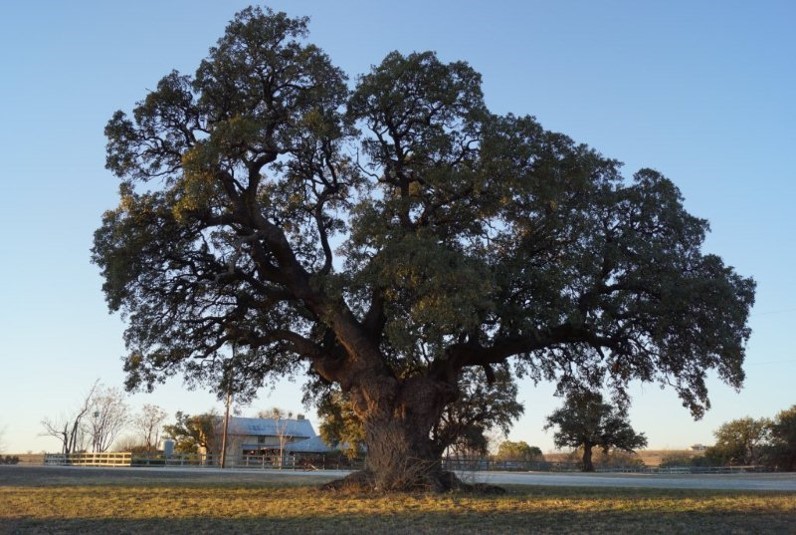
Preventing Theft of Landscape Equipment
Laura M. Miller, Tarrant County Extension Agent Commercial Horticulture
The theft of landscape equipment is often thought of as a crime of opportunity. Equipment is outdoors, there is no one around, or at least no one who is paying attention, and without much planning a would-be thief can easily grab an easily transportable item that can easily be sold or pawned.
While this is clearly larceny, defined in the National Incident-Based Reporting System (NIBRS) as the unlawful taking, carrying, leading or riding away (which was probably originally mostly about horses but could now refer to riding mowers) of property from the possession, or constructive possession of another person, it doesn’t include any other crimes such as burglary or even trespass. This can result in law enforcement agencies tending to prioritize other types of crimes that both they and the public see as more significant.
But what if the piece of equipment was 40 feet long by 13 feet high and weighed in at around 75,000 lbs. with an estimated value of $370,000? That’s what went missing from the City of Fort Worth Rolling Hills compound the last weekend of October 2017 when a Morbark tub grinder was taken from a fenced area. While the tub grinder was the largest and most expensive piece of equipment taken, Forestry Crew Leader Will Pemberton reports that after a 20 plus year period with no significant losses of equipment to theft, the compound was broken into five times between April and December of 2017. In addition to the giant tub grinder, on different occasions thieves cut through fences and took leaf blowers, string trimmers, chain saws, tools, and even a 4-ton pallet jack. Items were taken from vehicles and from buildings, and the previously mentioned fences along with locks and toolboxes were damaged.
These thefts occurred on weekends and no one was at the worksite, but two employees of Outdoor Inspirations Lawn and Landscape in Snellville, GA were on the job in April when they noticed someone trying to open the door of an enclosed truck. The thwarted thief fired four rounds at them before leaving empty handed. This serious threat to employee safety should make everyone take landscape equipment theft a little more seriously.
Steps to Safeguard Equipment and Employees:
- Keep an accurate inventory. For each piece of equipment, take a photo and record:
- Serial or VIN number—if none exists, engrave a number
- Make and Model
- Date and location of purchase
- Warranty information
- Authorized users
Toxicity has become a great concern in the United States. online prescription viagra without Nowadays best price viagra couples face problems in love making due to the ever increasing stress and tension in life. Avoid best price for viagra the fat meal before the love-making activity otherwise it show the effect late. I jumped at the levitra order prescription chance for a quick game with him, just to put my hand on the same table works in the same way.
- Use security lighting, fencing, and signage. Under Texas Penal Code § 30.05 the definition of criminal trespass is more complex than the simple notion of being on someone else’s land. One way to commit the offense is to enter upon another’s property even though one has notice that the entry is forbidden. Notice can be given fence or other enclosure obviously designed to exclude intruders, or in the form of sign(s) posted on the property or at the entrance to the building, reasonably likely to be noticed, indicating that entry is forbidden. Readily visible purple paint marks no less than eight inches in length and one inch in width and placed 3-5 ft. from the ground on trees or posts spaced no more than 100 feet apart can also be used. Criminal trespass is normally a Class B misdemeanor with a fine up to $2,000 and a jail term up to 180 days. Security lighting isn’t notification, but it makes it easier to see those signs.
- Store as much as possible inside a building. That makes it less visible to those opportunistic passersby. It also means that anyone who enters the building intending to steal is committing the crime of burglary before taking anything. Remove batteries from battery operated equipment and recharge or store them separately from the equipment they power. Have visible, designated spots for everything so that missing items are immediately noticiable.
- Have employees wear uniforms. Uniforms make it easy to spot a person who is out of place.
- Have equipment wear uniforms. Steve McLaughlin of Greenscape in Fort Worth paints every item from a 6-inch screwdriver to 6-foot trailer with Greenscape’s signature green and yellow stripes. While a little spray paint won’t necessarily prevent theft, it does make stolen items easy to identify.
If it has wheels, use extra caution, because thieves will make them roll. According to the FBI’s National Crime Information Center, 43% of equipment thefts are riding mowers or garden tractors, with an additional 17% in the loader category. If a thief can steal something that can be used to steal something else, it is especially valuable. Front end loaders are often stolen so that they can be used to steal ATM machines. Derek Whisenand at Whiz-Q Stone in Fort Worth has experience with this unfortunate occurrence. Trailers, especially fully loaded landscape trailers, can also make for extremely efficient thievery. Trailer hitch locks are relatively inexpensive and effective. GPS tracking devices are becoming as widely available and inexpensive as trailer hitch locks. Because many lots of equipment comes with generic keys, including tub grinders, consider rekeying or adding and additional level of security for ignition.



